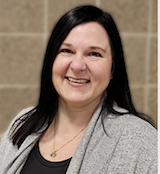Enhancing Instruction for Multilingual Learners: Coaching Practices to Empower Students
By Paula Polk
(ASCD, 2025 – Learn more)
Reviewed by Melinda Stewart
 Enhancing Instruction for Multilingual Learners: Coaching Practices to Empower Students by Paula Polk is an accessible resource for educators striving to support the linguistic and academic development of multilingual learners.
Enhancing Instruction for Multilingual Learners: Coaching Practices to Empower Students by Paula Polk is an accessible resource for educators striving to support the linguistic and academic development of multilingual learners.
Polk focuses on the role of coaching in the professional development of teachers and provides thoughtful suggestions for fostering inclusive, effective and responsive learning environments for students from diverse language backgrounds.
 Enhancing Instruction for Multilingual Learners centers the coach-teacher-student relationship. Teaching is not a solitary endeavor. Polk positions coaching as a dynamic, collaborative process that not only enhances the instructional skills of educators but also directly impacts the success of multilingual students.
Enhancing Instruction for Multilingual Learners centers the coach-teacher-student relationship. Teaching is not a solitary endeavor. Polk positions coaching as a dynamic, collaborative process that not only enhances the instructional skills of educators but also directly impacts the success of multilingual students.
This perspective highlights that the journey to better serving multilingual learners doesn’t just lie in isolated changes to curriculum, in isolated instructional techniques, or with one English Language Development teacher. Success lies in building a community of practice where educators are continuously learning from each other and refining their approaches.
Strategies that empower educators
Polk focuses on coaching practices. She doesn’t just talk about what teachers should do to support multilingual students, but she dives into the practices and strategies of coaching that empower educators to build their own capacity. This includes everything from providing meaningful feedback and creating safe space for reflection to co-planning lessons and sharing strategies for engaging multilingual students.
As someone who has served as a multilingual coach for my colleagues, the idea of empowering teachers resonated with me. At meetings and conferences I often hear about empowering students through voice and choice to help them develop their agency, but the concept definitely applies to adults as well. Whether we are discussing children, adolescents or adults, when faced with something new, we are asking learners to be vulnerable. In Enhancing Instruction for Multilingual Learners Polk emphasizes the idea of empowering teachers not to just implement strategies, but to feel confident and informed in making decisions that affect student outcomes. This empowering approach encourages agency, both for educators and for students.
Throughout her discussion of teaching practices, Polk goes beyond suggesting techniques to teach language to multilingual students; she emphasizes the need to understand students’ cultural contexts and the impact of language on their identities. Her coaching model helps to create classrooms where multilingual students feel seen, heard, and valued as learners of the English language and as individuals with unique backgrounds and perspectives that can enrich the classroom learning community.
Polk’s writing is clear, inviting, and actionable. Each chapter includes concrete strategies and examples of how coaching can be embedded in daily practice. Whether it’s through video analysis of teaching, peer observation, or co-teaching, Polk’s approach offers practical tools that educators and coaches can immediately apply.
Coaching with collaboration in mind
However, this process is not a one and done. Underlying the coaching practices is the understanding that professional development should not feel disconnected, but should be sustainable. Polk argues for an approach to coaching that is ongoing and collaborative, one that aligns with teachers’ actual challenges and allows for continuous growth. This is a reminder that teachers, especially those newer to working with multilingual learners, need support that goes beyond theoretical knowledge and focuses on practical, hands-on guidance.
Following the advice found in Enhancing Instruction for Multilingual Learners ensures that the work of supporting multilingual learners is not just left to individual teachers, but becomes a collective effort, one that builds sustainable and impactful teaching practices over time.
As I read Polk’s book, I kept thinking back to my training as an ELM coach through Hamline University. I didn’t see the ELM project or SWEL mentioned in Polk’s book, but if you start with Enhancing Instruction for Multilingual Learners and want to enhance your learning about coaching for multilingual learners even more, you should check out the work of Dr. Michelle Benegas and Dr. Amy Stolpestad at TESOL or ¡Colorín colorado!
Melinda Stewart has been an educator for 30 years. She has an MA in Teaching, Education and Learning and has done graduate work in the areas of English as a Second Language, Reading, Spanish, and most recently English Language Arts. She is currently working as a Spanish teacher and ELM coach at Fairmont Junior Senior High School. Melinda is an MEA and AFT professional development facilitator and trainer who has a deep passion for learning and equity.


